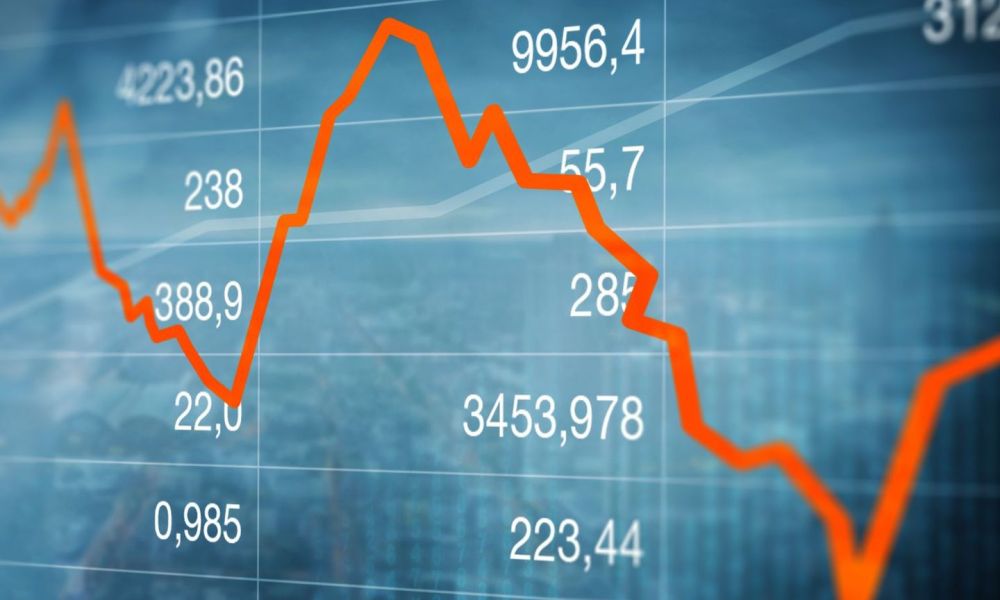
Hong Kong Exchanges and Clearing (HKEX) launched its Synapse platform this week, enabling global fund managers to operate within the same-day settlement times of the Stock Connect system for trading mainland China equities.
Synapse, in development since 2019 by participating custodian banks and vendor Digital Asset Holdings, is a rare example of a regional stock exchange using next-generation technology to improve its infrastructure.
It’s also an incremental use of new technology to solve a problem that, while important to Stock Connect, is peripheral to the main infrastructure and operations of HKEX.
According to vendors who work with HKEX, the exchange’s main business continues to run on decades-old legacy hardware – including mainframe computers that operate on COBOL, a language that dates to 1959.
Outdated tech
In other words, the systems continue to operate on a technology stack that can’t handle cloud computing and storage – let alone the ability to adopt round-the-clock trading, super low-latency trading, or smart contracts. Sources tell DigFin that executives that push too hard for modernizing the exchange’s legacy tech have even been fired.
One of the most important parts of the tech stack is the matching engine, which uses algorithms to put together multiple bids and offers in real time, varied by order type, so trades are completed. Other systems exist for clearing, managing securities depositories, and risk management.
A handful of vendors specialize in matching engines. For spot equities, the leaders include Nasdaq Trading Technology and Millennium Exchange (a unit of London Stock Exchange Group). Futures and options matching is done by the likes of CME’s Globex and Eurex (Deutsche Börse).
Pushing for change
In other words, the biggest business is done by commercial arms of the world’s most established bourses.
These vendors are keen to get their clients to upgrade – without losing the business. During the Covid pandemic, the industry’s focus was on survival, managing spikes in volumes, and enabling work-from-home conditions. Now focus is starting to turn toward the future. What might that look like?
The future for Asian stock exchanges is likely to include the ability to harmonize standards with other exchanges in order to attract liqudity.
That doesn’t mean stocks trading across exchanges (although the Stock Connect program shows this is possible) but adopting standards that make it easier to service global institutional investors, brokers, and custodians.
Before unpacking this, let’s look at the forces that make bigger, more radical change more likely.
Tech competitors
Exchanges are facing new types of competitive pressure. Technology platforms are one challenge across Asia Pacific. In a recent report on exchange technology, Nasdaq calls Asia “the center of market disruption”.
Although small, digital exchanges have emerged across the region, including FCX in Australia, Singapore Digital Exchange, and Fosun in Malaysia. While these originated to service crypto markets, they are also expanding to serve as markets serving private capital.
Hong Kong and Singapore have also licensed digital-asset exchanges, with two home-grown firms already live in Hong Kong and another four or five in the licensing process. Singapore has licensed DBS to run a digital exchange, and has recently given a license to Coinbase, the US crypto group.
In Singapore’s case, Singapore Exchanges is part of this emerging landscape; in Hong Kong, HKEX has remained aloof. But the story doesn’t end there. The Hong Kong government has issued a tokenized green bond. It is not listed on HKEX: it exists on a blockchain operated Goldman Sachs, using the internal clearing and settling capabilities of the Hong Kong Monetary Authority.
That may turn out to be a one-off, but the growth of green bonds has been a huge win for HKEX, where many of these securities are listed. It has also launched its own carbon market. But here it must compete with a variety of digital carbon markets, both at home and in Singapore. HKEX has a lead in green bonds but it will be under pressure to maintain this, unlike with its franchise equities business.
Meanwhile stock markets in Southeast Asian markets such as Thailand and the Philippines must contend with the emergence of new, blockchain-based liquidity pools aimed at fractionalizing securities for retail investors. Similar types of firms in Hong Kong and Singapore aim at serving wealthy individuals and family offices.
Finally, Asia’s central banks – notably in Hong Kong and Singapore, not to mention mainland China – are pushing hard on central-bank digital currencies. The emergence of a digital cash leg may catalyze the asset tokenization wave that the blockchain industry has promised but not yet delivered. If this wave materializes, the incumbent stock exchanges are not positioned to ride it.
Market trends
A second challenge to Asia’s bourses comes from overseas, such as the move in the United States to adopt T+1 settlement times. This requires a response by exchanges, clearing houses and central securities depositories to match this.
Project Synapse took four years and addressed one segment of business to meet a similar goal (in this case, China’s T+0 environment). Now imagine every marketplace having to ensure it keeps pace with the US. This means a massive effort to ensure the continuity, reliability and safety of each exchange’s post-trading systems.
This is the kind of upgrade that exchanges are loathe to embark on. The risks of radical change are too great if something goes wrong. And in Australia, something went wrong, bad wrong: ASX’s failed effort to make a big-bang upgrade to its post-trading system, Chess (using a solution promoted by Digital Asset).
Running out of time
The easy lesson by other stock markets might be to continue patching decades-old systems – in other words, business as usual.
But the clock is running out on this approach. Ongoing regulatory changes, market trends such as T+1, challenges from tech platforms, and the need to seize opportunities such as Stock Connect require stock exchanges to reckon with their ‘technology debt’: the implied cost a business incurs when it fails to fix problems that will affect it down the road.
Changes include embracing cloud computing for matching systems, experimenting with digital assets (including in the carbon space), and connecting payments to these new platforms.
More efficient, updated payment rails are critical to a region with Asia’s time zone challenge vis-à-vis the US, which can make it hard to amass liquidity. Project Synapse was one response to this, given the extreme situation of having to pre-fund trades into China, but the liquidity problem is regional and will become acute with the US going to T+1. Upgrading digital infrastructure can help.
Another way to think of Synapse is as a means of integrating Hong Kong closer to mainland China’s market. For example, Hong Kong must match Chinese holidays and trading hours. More fundamentally, traders or investors in either market must be ready to hedge any asset in either market if there’s a crisis.
The push and the pull
That need is true across the region’s money centers, including Singapore and Tokyo. Digitalization, beginning in crypto, has made markets trading 24/7 across securities and derivatives markets. As this bleeds into traditional markets, it means exchanges must fundamentally upgrade their trading and clearing systems.
For smaller markets in Southeast Asia, these big trends make it imperative that exchanges make it easy to trade, pay and settle in their local currency – including via the use of smart contracts, which are a crypto invention but can be designed to run on relational databases, too.
That pressure will only grow if central banks enable payment and settlements over holidays and weekends, as is already the case in the crypto world.
Tech, regulation and market forces are reshaping the exchange landscape like never before. Asia is leading some of these trends, and in others it is scrambling to keep pace. The quest for liquidity means exchanges have to be able to work with CBDCs or stablecoins, tokenized deposits, or other instant cross-border payment channels. They need to be cloud-enabled and have depository and clearing systems that can operate on new rails.
The upside is by taking the best from the cloud and crypto worlds, Asia’s stock exchanges can transform trading, clearing and settlement and become super capital-efficient. Liquidity will improve, pre-funding will be a thing of the past, and bourses can take new markets such as carbon credits to new heights.
That sounds dreamy to the IT and ops executives now looking at ASX’s debacle and telling their shareholders they don’t want to make big changes. HKEX’s Synapse could be a one-trick pony, designed for a niche use case and stuck there forever. Or it could be a precursor to a bigger change. Which stock exchange has the governance and the vision to forge a new kind of capital market?
- SEO Powered Content & PR Distribution. Get Amplified Today.
- PlatoData.Network Vertical Generative Ai. Empower Yourself. Access Here.
- PlatoAiStream. Web3 Intelligence. Knowledge Amplified. Access Here.
- PlatoESG. Carbon, CleanTech, Energy, Environment, Solar, Waste Management. Access Here.
- PlatoHealth. Biotech and Clinical Trials Intelligence. Access Here.
- Source: https://www.digfingroup.com/hkex-synapse-2/
- :has
- :is
- :not
- :where
- 2019
- a
- ability
- Able
- across
- addressed
- adopt
- Adopting
- affect
- After
- aim
- aimed
- algorithms
- alone
- already
- also
- Although
- an
- and
- Another
- any
- approach
- ARE
- arms
- AS
- asia
- asia pacific
- Asia’s
- asian
- asset
- Asset Tokenization
- Assets
- At
- attract
- Australia
- authority
- Bad
- Banks
- BE
- become
- been
- before
- Beginning
- BEST
- Big
- bigger
- Biggest
- blockchain
- blockchain industry
- blockchain-based
- bond
- Bonds
- both
- brokers
- business
- but
- by
- Calls
- CAN
- capabilities
- capital
- capital-efficient
- carbon
- carbon credits
- case
- Cash
- catalyze
- CBDCs
- Center
- Centers
- central
- Central Banks
- challenge
- challenges
- change
- Changes
- channels
- Chess
- China
- Chinas
- chinese
- Clearing
- clients
- Clock
- closer
- Cloud
- cloud computing
- COBOL
- coinbase
- comes
- commercial
- compete
- competitive
- Completed
- computers
- computing
- conditions
- Connect
- Connecting
- continue
- continues
- continuity
- contracts
- Cost
- could
- Covid
- Credits
- crisis
- critical
- cross-border
- crypto
- Crypto Group
- Crypto Markets
- currencies
- Currency
- custodian
- custodians
- databases
- Dates
- DBS
- delivered
- depository
- deposits
- Derivatives
- derivatives markets
- designed
- Development
- digital
- Digital Asset
- Digital Assets
- digital currencies
- digitalization
- Doesn’t
- done
- Dont
- down
- during
- each
- easier
- easy
- efficient
- effort
- either
- embark
- embracing
- emerged
- emergence
- emerging
- enable
- enabling
- end
- Engine
- Engines
- ensure
- Environment
- Equities
- established
- Even
- Every
- example
- exchange
- Exchanges
- executives
- exist
- exists
- expanding
- extreme
- facing
- Failed
- fails
- family
- fired
- firms
- five
- Fix
- Focus
- For
- Forces
- forever
- forge
- four
- Franchise
- from
- fund
- fund managers
- fundamentally
- future
- Futures
- get
- given
- Global
- goal
- Goes
- going
- goldman
- Goldman Sachs
- governance
- Government
- great
- Green
- Group
- Grow
- Growth
- handful
- handle
- Hard
- Hardware
- Have
- having
- hedge
- heights
- help
- here
- HKEx
- Holdings
- holidays
- Home
- Hong
- Hong Kong
- Hong Kong Monetary Authority
- HOURS
- houses
- HTTPS
- huge
- if
- imagine
- imperative
- implied
- important
- improve
- in
- In other
- include
- Including
- incremental
- Incumbent
- individuals
- industry
- industry’s
- Infrastructure
- instant
- Institutional
- institutional investors
- Integrating
- internal
- into
- Invention
- Investors
- Issued
- IT
- ITS
- jpg
- Keen
- Keep
- Kind
- Kong
- landscape
- language
- launched
- lead
- leaders
- leading
- Legacy
- lesson
- let
- License
- Licensed
- Licensing
- like
- likely
- likes
- Liquidity
- liquidity pools
- Listed
- live
- local
- London
- London Stock Exchange
- Look
- look like
- looking
- losing
- made
- Main
- mainland
- mainland china
- maintain
- make
- Malaysia
- management
- Managers
- managing
- many
- Market
- market forces
- Market Trends
- marketplace
- Markets
- massive
- Match
- matching
- May..
- mean
- means
- Meet
- mention
- might
- Millennium
- modernizing
- Monetary
- monetary authority
- money
- more
- most
- move
- multiple
- must
- Nasdaq
- Need
- never
- New
- next
- next-generation
- niche
- notably
- now
- of
- Offers
- offices
- on
- ONE
- ongoing
- only
- operate
- operated
- Operations
- opportunities
- Options
- or
- order
- originated
- Other
- Others
- out
- over
- overseas
- own
- Pace
- Pacific
- pandemic
- part
- participating
- parts
- past
- Patching
- Pay
- payment
- Payment channels
- payments
- peripheral
- Philippines
- platform
- Platforms
- plato
- Plato Data Intelligence
- PlatoData
- Pony
- Pools
- positioned
- possible
- precursor
- pressure
- private
- Problem
- problems
- process
- Program
- project
- promised
- Promoted
- Push
- Pushing
- put
- quest
- radical
- rails
- RARE
- ready
- real
- real-time
- recent
- recently
- region
- regional
- Regulation
- regulatory
- reliability
- remained
- report
- require
- requires
- response
- retail
- Retail Investors
- Ride
- Risk
- risk management
- risks
- road
- Run
- running
- Sachs
- Safety
- Second
- Securities
- segment
- Seize
- serve
- service
- serving
- settle
- settlement
- Settlements
- settling
- Shareholders
- Shows
- similar
- since
- Singapore
- Singapore’s
- situation
- small
- smaller
- smart
- Smart Contracts
- So
- solution
- SOLVE
- some
- something
- Sources
- southeast
- Southeast Asia
- Space
- specialize
- spikes
- Spot
- Stablecoins
- stack
- standards
- Starting
- States
- stock
- Stock Exchange
- stock exchanges
- Stock markets
- Stocks
- storage
- Story
- such
- Super
- survival
- Synapse
- system
- Systems
- Take
- taking
- tech
- Technology
- tell
- telling
- Thailand
- that
- The
- The Future
- The Philippines
- their
- There.
- These
- they
- thing
- Think
- this
- this week
- time
- times
- to
- together
- Tokenization
- tokenized
- tokyo
- too
- took
- toward
- trade
- Traders
- trades
- Trading
- Trading Technology
- traditional
- traditional markets
- Transform
- Trends
- true
- TURN
- two
- type
- types
- under
- unit
- United
- United States
- unlike
- Unpacking
- updated
- upgrade
- Upside
- us
- us crypto
- use
- use case
- uses
- using
- usual
- variety
- vendor
- vendors
- via
- vision
- volumes
- want
- was
- Wave
- Way..
- wealthy
- week
- went
- What
- when
- which
- while
- WHO
- will
- win
- with
- within
- without
- words
- Work
- world
- world’s
- Wrong
- years
- yet
- zephyrnet












